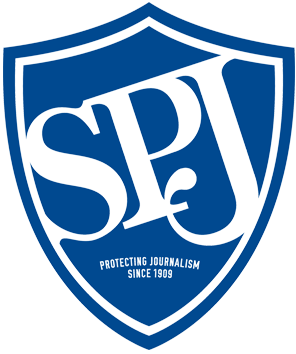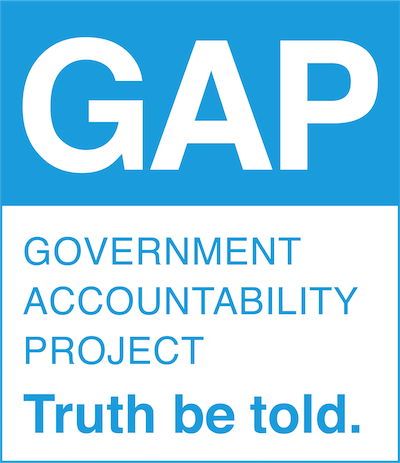The Whistleblower Project


– Introduction
– A Call to Action: Whistleblower Protection Legislation
If passed, these laws would help improve protection for whistleblowers.
Whistleblower Basics
– The Law and Whistleblowing
Deciphering the laws dealing with whistleblowing is complicated, but we hope this will help.
– Whistleblowers and Retaliation
Those who expose wrongdoing can face job loss, lawsuits or even prison.
– Leaking vs. Whistleblowing
Can you spot the difference between a leaker and a whistleblower? It may be trickier than you think.
– Nine Organizations That Work With and Help Whistleblowers
Best Practices for Journalists
– Source Protection and Anonymity for Whistleblowers
In political journalism, there’s a debate over allowing sources to talk to you off the record, in order to keep the access pipeline flowing. Anonymity and the ethics of it can also be complicated in situations beyond scoring political points.
– Whistleblowers and Reporters: Trust
Here are some best practices to follow when working with a whistleblower on a story.
– Technology Can Help Whistleblowers Communicate Anonymously
The ways that reporters and whistleblowers communicate is evolving. The introduction of secure communications has become necessary as journalists try to protect their sources, all the while trying to guarantee the information is secure.
– Anonymity: Not Always the Possible, Nor Always the Best, Strategy
Many whistleblowers want to disclose information about trouble in their workplaces while maintaining their anonymity. However, the vast majority of whistleblowers — more than 95 percent — try to solve their problems internally first.
– When Working with Whistleblowers, Same Ethical Journalism Principles Apply
Government Accountability Project’s “Working with Whistleblowers: A Guide for Journalists” details best practices for working with whistleblowers.
Voices
– Kathryn Foxhall: Good whistleblowing simply needs free speech
During the last 25 years it’s become an accepted norm for government, business, nonprofits and other organizations to prohibit employees to ever communicate with journalists without notifying and being overseen by the authorities, often public information officers. The restrictions are intense, highly effective censorship. The Society of Professional Journalists has made opposing them a priority.
– Jesselyn Radack: Challenges in Defending National Security Whistleblowers
War crimes, mass surveillance, torture: some of the biggest stories in modern history relied on whistleblowers in national security and intelligence agencies. They came forward at great risk to expose the truth.
– Nick Schwellenbach: The Modern Politics of American Whistleblowing
Insiders Valued More Highly in U.S. Society, But Still Face Perils.
 Dr. Susan Wood formerly served as the Food and Drug Administration’s assistant commissioner for women’s health and as director of the Office of Women's Health. When she concluded in 2005 that the President George W. Bush Administration’s politics was tying up the approval of Plan B, not the safety or efficacy of this “morning-after pill,” she resigned and spoke out forcefully to say FDA science was being held captive by the anti-abortion movement.
Get the full details of Susan's story, along with 24 other times whistleblowers changed history.
Dr. Susan Wood formerly served as the Food and Drug Administration’s assistant commissioner for women’s health and as director of the Office of Women's Health. When she concluded in 2005 that the President George W. Bush Administration’s politics was tying up the approval of Plan B, not the safety or efficacy of this “morning-after pill,” she resigned and spoke out forcefully to say FDA science was being held captive by the anti-abortion movement.
Get the full details of Susan's story, along with 24 other times whistleblowers changed history.
Features
– Mary Willingham: An Attempt To Make The College Athletic System Better For Athletes
Mary Willingham talks about why she spoke out about the treatment of college athletes at North Carolina and why — despite death threats from college sports enthusiasts — she would do it again.
– Megan Wood: Reporting with Purpose
Megan Wood talks about why she looked into San Diego Christian College’s missing $20 million in expenses and how whistleblowers make a difference in their communities.
– Richard Bowen: Blowing the Whistle on Defective Mortgages
While evaluating $90 billion of mortgages Citigroup was buying from Countrywide and other lenders, former Citigroup vice president Richard Bowen tried to warn company leaders and board members about the rise in defective mortgages. In 2010 he testified before the Financial Crisis Inquiry Commission. Here, in Bowen’s words, is what happened next.
– Craig Watts: Typical American Farmer Risks Career to Reveal Inhumane Conditions at Chicken Farms
Craig Watts was a typical American farmer with three kids, two dogs, and a barn full of chickens. That all changed though when he decided to show the public the conditions chickens, sold by Perdue farms, were being raised in.
Credits
Meet the Project Team
Cary Aspinwall, of The Dallas Morning News, who writes about the criminal justice system, knows the challenges of the relationship between journalist and source, and if a journalist can provide security for a source.
One way to provide security for whistleblowers is to use encrypted technology, with apps like Signal, Telegram or PGP Public Key. At The Dallas Morning News, they’ve seen a rise in people reaching out through those apps and encrypted messaging, giving Aspinwall and her colleagues a new way to support their work.
“I was excited for all the new ways for people to contact us,” Aspinwall said in a telephone interview. “The more avenues to keep communications safe and secure, the better.”
The integration of this technology into newsrooms comes amid national and global concerns on the security of telephone calls and other means for whistleblowers to exchange information with journalists.
“You have to work twice as hard to build trust,” Aspinwall said.
Building trust is an issue of concern for many investigative journalists. Aspinwall said one way she increases trust is by including public documents that were used in the reporting process in the story.
Encrypted technology can also help build trust with a source.
While Aspinwall likes to meet people in person, she says that technology can be useful in the right situations. Additionally, Aspinwall says that secure communications can help calm sources’ fears when going public with concerns.
“Any of the tools to help protect [sources] going up against the government or companies are a plus,” Aspinwall said.
If there is uncertainty with an encryption program, Aspinwall said to consult an expert to make sure anonymity can be promised, and to talk to people who are well versed in it.
“It can be foreign territory for those raised in the old-school, shoe-leather model, but you don't want to put your sources in jeopardy,” Aspinwall said.
As long as journalists take precautions, things will fall into place, she said. Ultimately, Aspinwall said she thinks journalists have a responsibility for their communications to be secure.
“If someone is coming forward as a whistleblower, be it against the government or a company, as a journalist you have a responsibility that your communications are secure and you're not the reason they are exposed,” Aspinwall said.
For further information on source protection for journalists, please consult the Freedom of the Press Foundation’s guides and resources about secure electronic communication and best practices.
Next: Anonymity: Not Always the Possible, Nor Always the Best, Strategy